Rust armorer sentenced to 18 months in fatal shooting by Alec Baldwin
SANTA FE, New Mexico — Hannah Gutierrez, the chief weapons handler for the Western movie Rust, was sentenced to 18 months in prison on Monday in the death of cinematographer Halyna Hutchins, who was shot when actor Alec Baldwin was handling a gun during the film’s production in 2021. In March, Ms. Gutierrez, 27, was found guilty of involuntary manslaughter for mistakenly loading a live round into a revolver Mr. Baldwin was using on a Santa Fe, New Mexico, movie set.
“You alone turned a safe weapon into a lethal weapon,” Judge Mary Marlowe Sommer told Ms. Gutierrez as she handed down the sentence.
In video calls and the courtroom during the hearing, Hutchins’ friends from the film industry paid tribute to her creativity and kindness. They also lambasted Ms. Gutierrez’s breaches in firearms safety protocol.
“I struggle to deal with this repeatedly being called an accident, because it was not an accident, it was negligence,” said Jen White, a film industry colleague.
The shooting, which stunned Hollywood, is believed to be the first time in modern times that a member of a film crew or cast was killed by a live round accidentally loaded into a gun. Mr. Baldwin’s trial is set for July 10 after a grand jury indicted him on a charge of involuntary manslaughter in January. Ms. Gutierrez’s lawyer Jason Bowles had requested she be given probation, but prosecutors argued for a full 18 months due to lack of contrition.
“I beg you please don’t give me more time,” Ms. Gutierrez told the court, adding that her “heart ached” for Ms. Hutchins’ family. “The jury has found me at fault for this tragedy but that doesn’t make me a monster, that makes me human.”
In a video call from Kiev the Ukraine-born cinematographer’s mother mourned her daughter’s death and her young grandson Andros being left without a mother.
“It’s the hardest thing to lose a child,” said Olga Solovey, whose comments were translated into English in subtitles.
Prosecutor Kari Morrissey pointed to phone calls by Gutierrez from jail in which she said the jurors were “idiots,” the judge had been “paid off,” and she continued to blame Baldwin and others for the shooting.
Gutierrez had already spent a month in Santa Fe county jail following her conviction.
THREE-WEEK TRIAL
On March 6, a Santa Fe jury took less than two hours to find her guilty. One juror afterwards said Ms. Gutierrez had not done her job to ensure weapons safety on set.
Ms. Hutchins’ death initially prompted US film and television productions to stop using real firearms and blank ammunition. Two and a half years later, many are using them again because of the realistic effects they produce, according to armorers.
Ms. Hutchins was fatally shot when Mr. Baldwin pointed his gun at the cinematographer and cocked the weapon as she set up a scene.
During Ms. Gutierrez’s three-week trial, prosecutors accused her of unknowingly bringing live Colt .45 rounds onto the set of the low-budget movie, something that has been strictly forbidden for nearly a century under Screen Actors Guild safety guidelines. Mr. Bowles said Ms. Gutierrez was the scapegoat for a chaotic production where she was not given time to check weapons. He blamed Ms. Hutchins’ death on reckless use of firearms by Mr. Baldwin and his efforts to rush and control the filming. Mr. Baldwin was also a producer and writer on the movie.
Attorney Gloria Allred, representing Ms. Hutchins’ parents and sister in a lawsuit against Mr. Baldwin, said she supported his criminal prosecution.
“Mr. Baldwin has done everything he could to try to dismiss the case but at this point it appears that trial is going forward,” Ms. Allred told reporters outside the courthouse.
The 30 Rock actor denies pulling the trigger and said he had been directed to aim it at the camera. But the FBI and an independent firearms expert found the gun would not fire without the trigger depressed.
Film historians such as Alan Rode have look to back to the early part of the last century to find examples of Hollywood cast or crew killed by live rounds accidentally loaded into guns.
Previous on-set fatal shootings of actors Brandon Lee in 1993 and Jon-Erik Hexum in 1984 involved blank rounds. — Reuters








![[PESO PHOTO]20180207_175609](https://www.bworldonline.com/wp-content/uploads/2021/12/PESO-PHOTO20180207_175609-640x360.jpg)


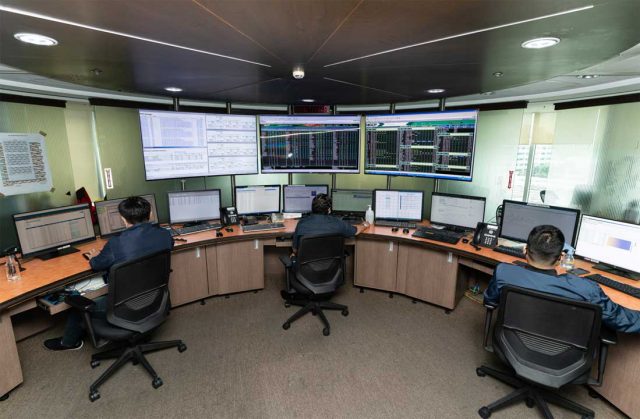
 “Once that’s complete and we have no more requirements for them to submit, we can finalize the evaluation of the program,” Ms. Dimalanta said.
“Once that’s complete and we have no more requirements for them to submit, we can finalize the evaluation of the program,” Ms. Dimalanta said.